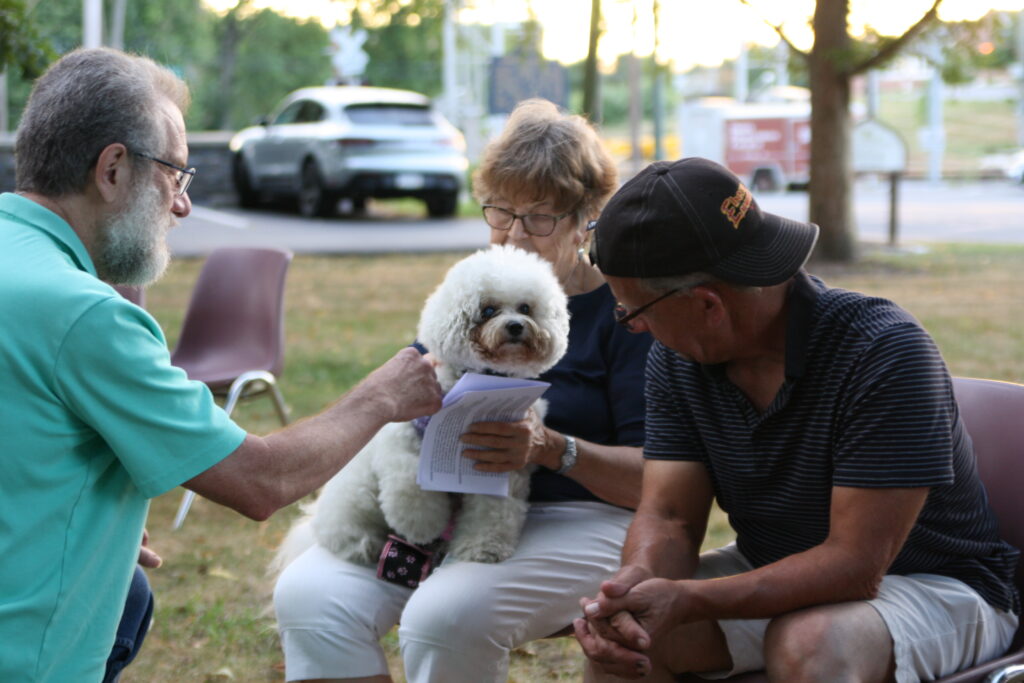News
Introducing Derry’s Nursery Child Care Leader
August 2, 2023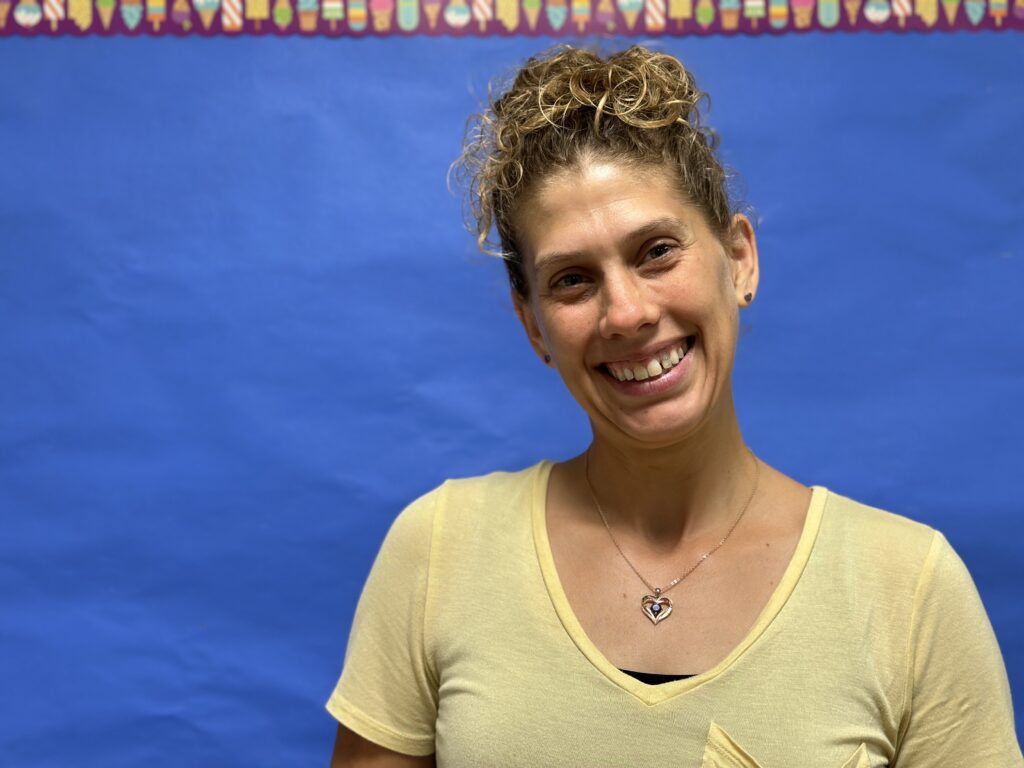
Stop by the church nursery on Sunday morning and say hello to Haily Rador, our new Nursery Child Care Leader. In this role, she provides nurturing, loving care for the young children of Derry Church, and coordinates and schedules paid nursery staff and volunteers to assure adequate coverage.
Haily and her family moved to Pennsylvania in 2018 after her husband retired from the Air Force. She is mom to five children in a family that includes two dogs, a parakeet, three fish, two leopard geckos and a bearded dragon. Haily has more than 18 years’ experience working in childcare, including two years at Derry Discovery Days’ Preschool.
Haily loves music (singing), hiking, RV-ing, playing sports (she coaches and plays volleyball), watching movies, the outdoors and (almost) all creatures. The Radnor’s youngest two kiddos attended preschool at DDD where she fell in love with the kids and people of Derry Church.
Says Haily, “I am so excited to be at Derry with the children and their families and look forward to meeting you!”
New! Health Time with Nurse beckie
August 2, 20231-2 PM WEDNESDAY, AUG 23 (AND SUBSEQUENT FOURTH WEDNESDAYS) ON ZOOM: CLICK TO JOIN
“Health Time with Nurse Beckie “ is a new one-hour health class on Zoom presented by our own Faith Community Nurse, Beckie Freiberg. Join her on the fourth Wednesday of each month to discuss a new health topic.
Beckie will give a 15-20 minute presentation, followed by discussion and questions. On Aug 23, the focus will be on Lyme disease and ticks, and in following months she will cover topics including diabetes, type 1 & 2 and metabolic syndrome, cold and flu season precautions, hypertension, heart disease and stroke, health maintenance and screenings, and what you need to know before traveling internationally.
You and your friends and family are invited to join Beckie for these informative conversations. Contact Beckie with your suggestions for future Health Time topics.
Let Reading Take you Places in August
August 2, 2023August is the final month to Let Reading Take You Places in Derry’s Ruth Codington Lending Library.
It’s time to travel the globe and “book” your ticket to anywhere! See India through the eyes of 17 year old Lakshmi in The Henna Artist, head to Victorian England in Anne Perry’s mystery No Graves As Yet, or find out the fate of the Price family’s mission in the Belgian Congo in Barbara Kingsolver’s Poisonwood Bible. Get a head start on our 300th Anniversary trip with a book on Scottish customs, learn about the three faiths of Jerusalem, or peruse the biblical prints of Japanese printmaker Sadao Watanabe. And if you still haven’t followed Liz Gilbert through Italy (Eat), India (Pray), and Bali (Love), now is your chance!
While you’re at the library picking up your next entry in the Summer Reading Contest (Aug 13 deadline approaching fast!), visit the Staff Shelf to see their travel reading recommendations. Then, add your votes to the This or That graffiti wall (eat cacio y pepe in Italy OR carne asada in Argentina?) Don’t forget, you can browse books any time in our online catalog.
Sunday Sermon Conversation Starters: 8/6/23
August 2, 2023Here’s a new way to keep the conversation going after Sunday worship: gather your family, friends, small group, or committee to discuss a few questions based on the sermon. Here are four questions for the week of August 6:
- What comes to mind when someone talks about the Book of Revelation? What’s been your impression of the book?
- What did you learn about Revelation and its context from the sermon?
- What image, illustration, story, phrase, or message really stuck out to you from the sermon? Why?
- Do you believe there will be a day when all that has gone wrong will be made right? What do you hope that looks like specifically for you right now?
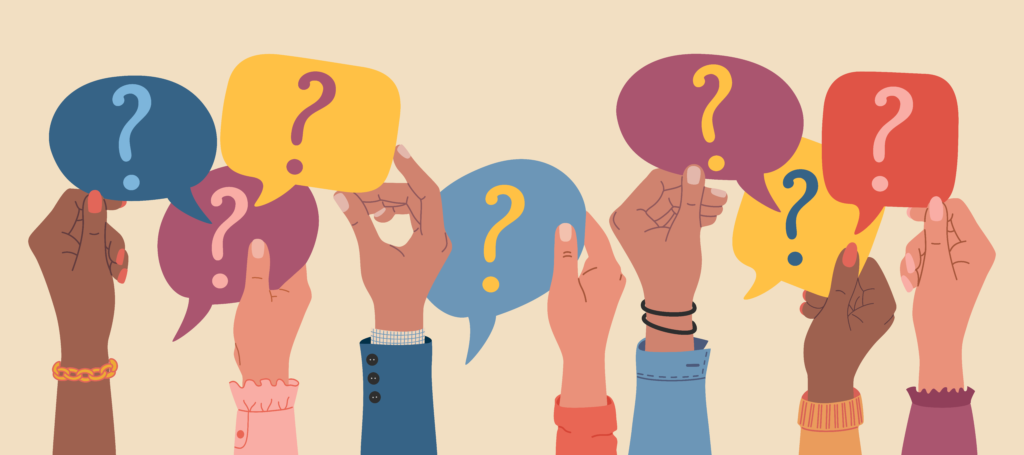
Bell Tower Renovations Under Way
July 26, 2023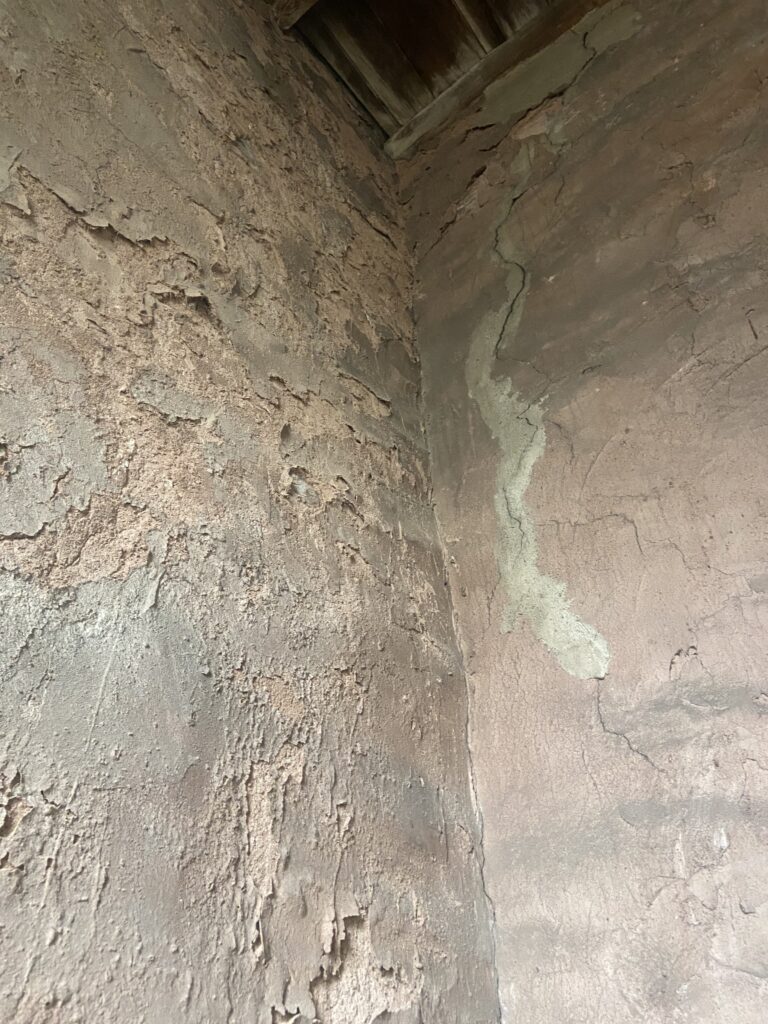
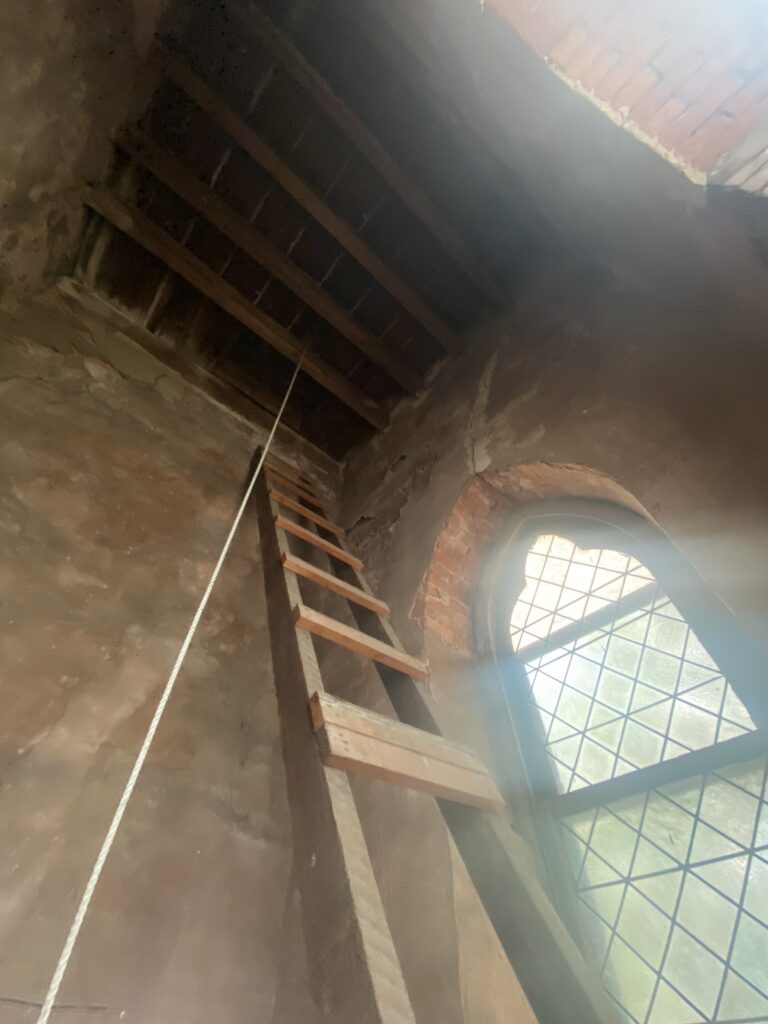
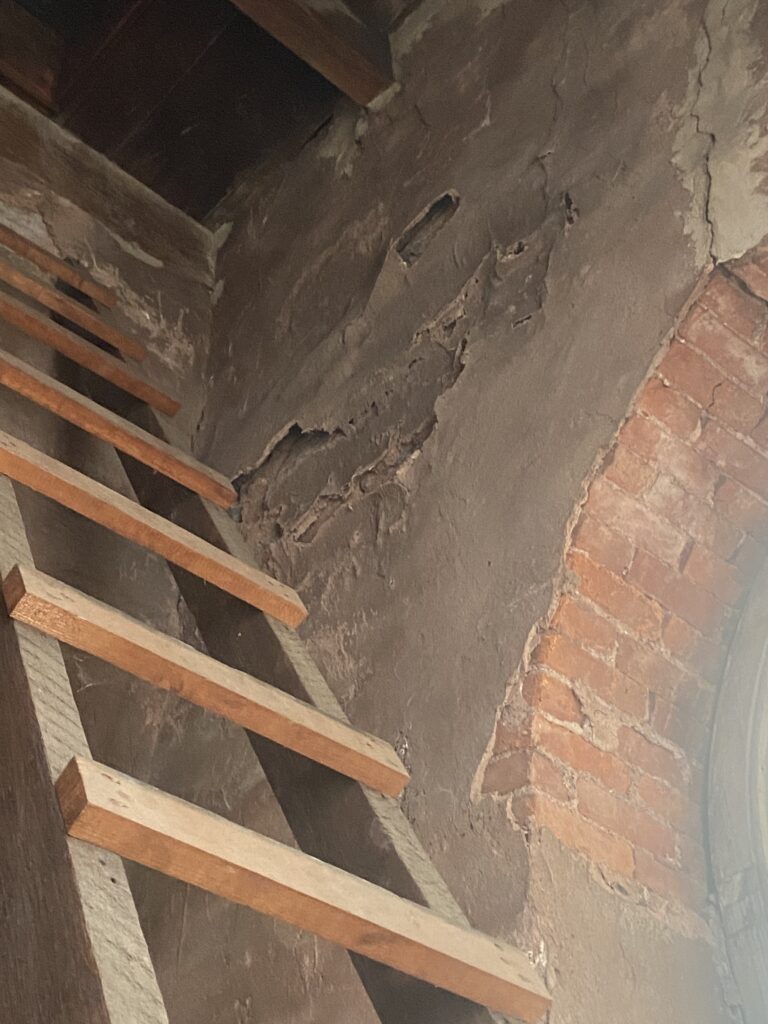
Work is under way this month in the Chapel bell tower, where crumbling masonry is being fixed, brickwork around the windows is being repaired, and old wooden ladders are being replaced with ship’s ladder stairs. An old motor and bellows for the pipe organ that used to be in the Chapel have already been removed.
Racetrack Meal: Volunteers and Food Needed
July 26, 2023MEET 4:30 PM MONDAY, JULY 31 AT DERRY CHURCH, TRAVEL TO GRANTVILLE
On Monday we’re feeding the back-of-the-track workers at Penn National racetrack. Derry’s Hospitality Coordinator, Loretta Chubb, is providing the main course. Desserts and a watermelon are needed to round out the meal, along with two gallons of lemonade and two gallons of iced tea, and your good help to serve the meal.
Contact Marilyn Koch (717-503-6248) to sign up.
Join an Easy Arthritis Class on Zoom
July 26, 20232-3 PM WEDNESDAYS: CLICK THIS LINK TO JOIN FROM YOUR COMPUTER, TABLET OR SMARTPHONE. HELPFUL HINT: MAKE SURE YOU ARE LOGGED IN TO ZOOM BEFORE YOU CLICK THE LINK
When it comes to managing arthritis discomfort and pain, studies have shown that “motion is lotion.” Join Derry member Sandy Morales, a certified arthritis exercise instructor who has been teaching the class for 14 years. She will guide you through a series of gentle exercises designed to take your joints through their range of motion.
Most of these exercises are done seated in a chair. An important goal of the class is fall prevention. Strength and balance exercises are included which will help you to prevent a fall. No special exercise equipment is required: just have some light hand weights or even small water bottles or soup cans handy for the strength training exercises, along with water to drink to keep yourself well-hydrated.
Chicken BBQ Benefits Hope Within
July 26, 2023Our mission partner — Hope Within Community Health, Counseling & Dental Center — is having their annual chicken BBQ fundraiser! Nolt’s BBQ from Manheim prepares a delicious, slow-cooked, charcoal-grilled ½ chicken in the “Amish style.” The meal also includes a baked potato, applesauce, roll, butter and a drink. Order at the link below by Aug 1 and pickup 11 am – 1 pm Saturday, Aug 12 at Hope Within, 4748 Harrisburg Pike, Elizabethtown. There’s also an option to purchase meals for Hope Within patients. Click to order

Derry Church Seeks a Treasurer
July 20, 2023Our church treasurer, Craig Kegerise, has expressed his need to resign from the position. We thank Craig for all his work and service to Derry Church.
We are now in the process of identifying a new church treasurer. If we cannot find a volunteer, we may have to outsource or hire for the position.
The person selected as treasurer will be very familiar with accounting practices, bookkeeping, and financial software. Click to view the position description.
Contact Pastor Stephen if you have questions or are interested in applying.
July 2023 Financial Snapshot
July 19, 2023Cash Flow – Operating Fund as of 6/30/23:
| ACTUAL | BUDGETED | |
| Income YTD: | $636,677 | $649,500 |
| Expenses YTD: | 663,531 | 685,441 |
| Surplus/(Deficit) YTD: | (26,854) | (35,441) |
Treasurer’s note: June income again fell short of budget, but expenses were also below budget
Sanctuary Guild Teams Needed
July 19, 2023Derry Church’s Sanctuary Guild teams come over to the church every other week to make sure supplies in the pew racks are restocked and the pews are tidy.
More teams are needed to get the job done on a regular basis. Sign up as a single and we’ll pair you with someone, or sign up as a couple. Either way, you decide when to come in on your scheduled week. This job takes about an hour. Contact Kathy Yingst or Pastor Stephen for more information and to sign up.
Worship Celebrating Our Covenant with Animals
July 19, 20237 PM TUESDAY, AUG 22 ON THE FRONT LAWN, WEATHER PERMITTING
In celebration of all of God’s creatures and their presence in our lives, Derry Church offers its 16th annual worship service that includes a hands-on blessing of animals and the people with whom they live. Animals on leash, in a kennel, or otherwise controlled are invited to attend along with their owners. Praise songs and hymns, prayer and a brief meditation are also a part of the worship service. Dress casual.
You’re invited to bring donations for the Humane Society as an outreach to those who help care for animals in need of help and homes. Click for a list of most-needed items.
